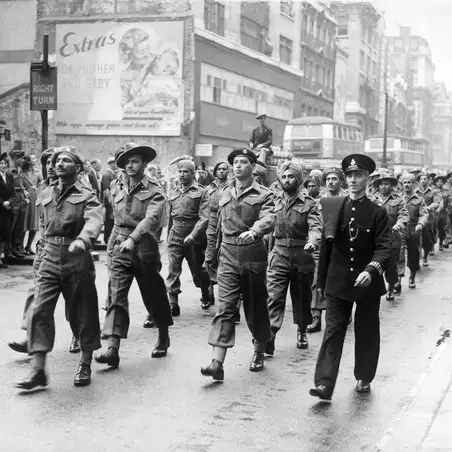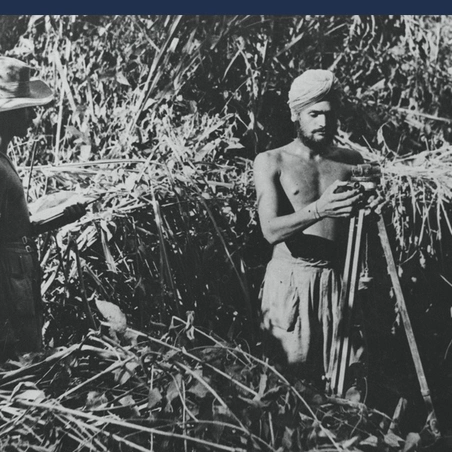At the start of 1945, five million British men and women were posted around the world.
There were RAF crew in Egypt, infantry in Germany, Wrens in ports around the Atlantic and the Indian Ocean, and artillerymen in Burma. Plus over a quarter of a million POWs still behind bars, 90,000 of them in the Far East.
The UK in 1945
As these men and women approached the Clyde or the Mersey or the Thames, they were full of emotions and questions.
Will my girlfriend or boyfriend still be waiting? Has my town been changed much by bombing? Will I find a job?
Rationing was still in place, and would continue in some way until 1954. In 1944, unemployment was at a historically low level, but with thousands of men and women returning to the workforce from the services, soldiers were worried they might get squeezed out.
The process of demobilization - demob – involved the gift of a suit from the government, the promise of the right to your old job back, and a lump sum payment of £83.
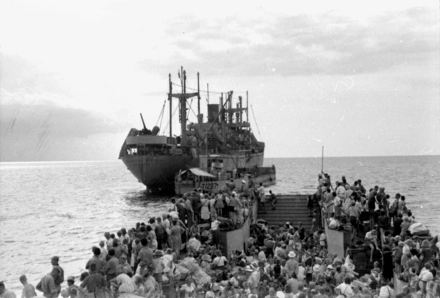
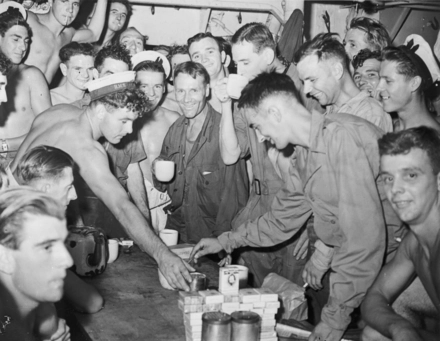
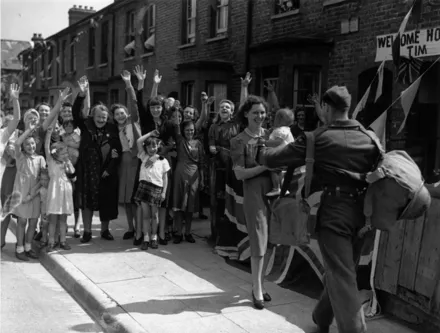
The Beveridge Report and the NHS
The country was going through rapid changes. The Beveridge Report had been published in 1942, and promised post-war changes to the social structure of the country, including a new system of social insurance, family allowances, high employment and a National Health Service.
The Depression of the 1930s had scarred the country, and part of the hope of the war was a better life for all afterward - to deliver on the idea of a ‘land fit for heroes’.
For the first time, people of all social classes in all parts of the country would be entitled to a safety net to catch them if they fell. The NHS was formally launched on 5 July 1948.
General Election
Throughout the war, the country had been governed by a coalition of Conservatives, Labour and Liberals. Everyone expected that Winston Churchill, the popular wartime leader, would be re-elected. But that was not going to happen.
There was a massive popular swing to the Labour party. Clement Attlee (who had served in the army in the Great War, at Gallipoli and in Mesopotamia) became the Prime Minister on 26 July, between VE Day and VJ Day.
POWs returning
As a gunner in the Royal Artillery, he landed in Singapore on 29 January 1942 but was severely wounded within a few days.
He found himself a prisoner soon after, one of 80,000 captured by the Japanese. He survived the notorious Alexandra Hospital massacre and the Burma Railway.
Part of his survival strategy was to ‘survive today, not to think about yesterday or tomorrow’. But Anckorn also had a special skill. He was a member of the Magic Circle and made use of his magic skills in the POW camps.
One commandant loved to watch his tricks, but Fergus had no equipment with him. He borrowed a coin from the Japanese officer, made it vanish and then produced it from a tin of fish. As a result, he was given the fish to take away – a valuable addition to the poor diet provided by the captors.
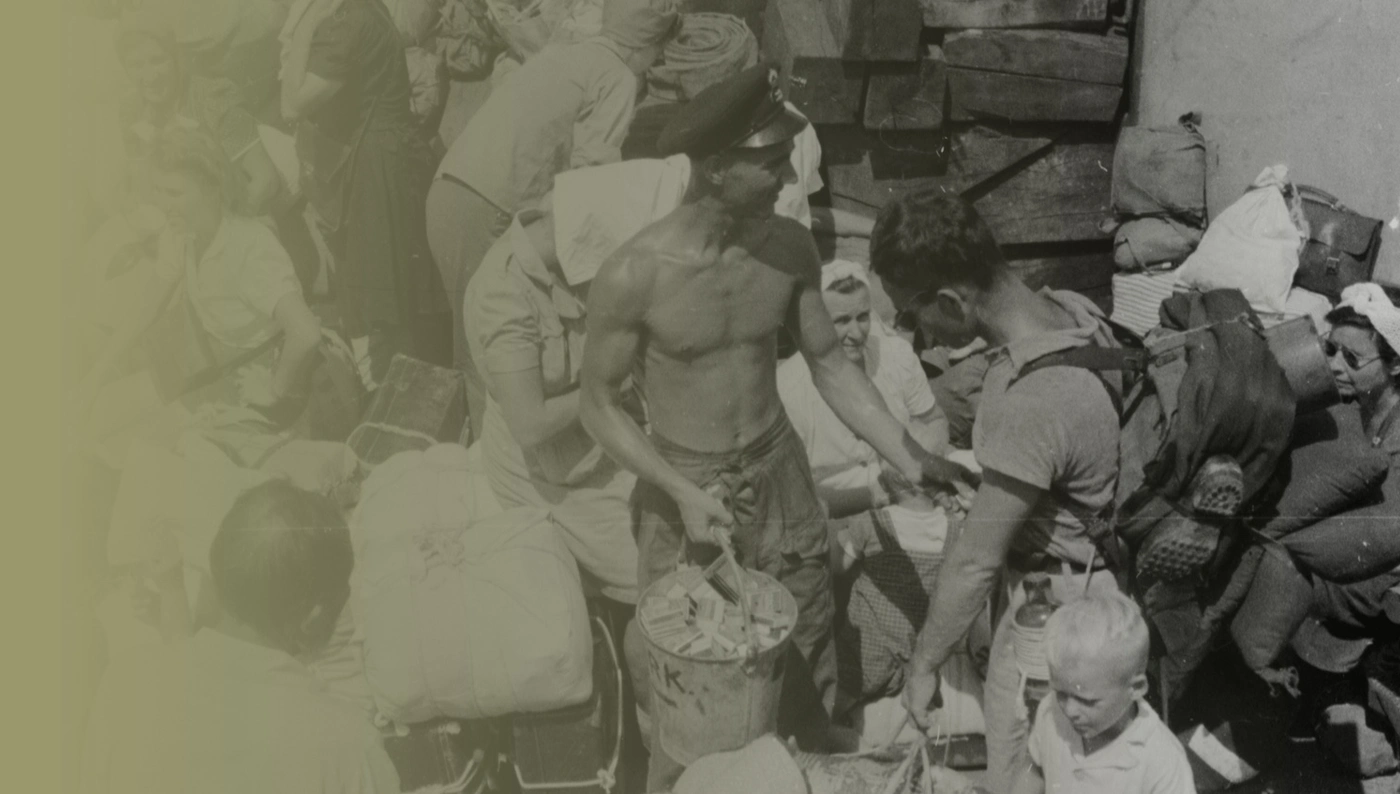
Fergus arrived at Liverpool on 9 November and took a train to London, where they were reunited. They married in 1946 and had two children, living a long and happy life together.
But Fergus had difficulty adjusting to his new life. In 2005 he visited Singapore again, and ‘the nightmares he had been experiencing for fifty years stopped’.
He was one of many thousands of British, Australian and Indian POWs who survived, but whose lives were altered forever by their experience. Some were able to forgive their Japanese captors, some were not. All carried their memories with them for their life’s span.





